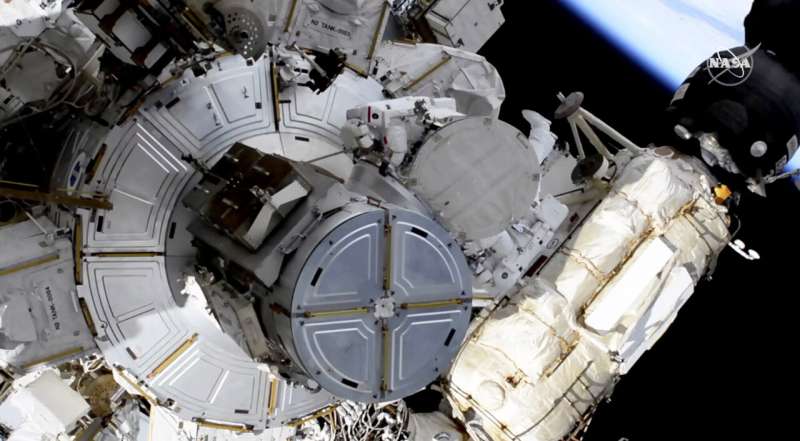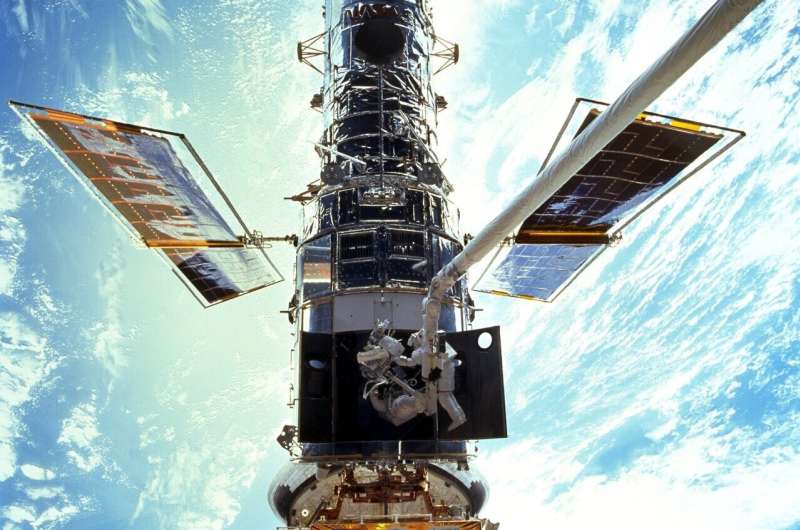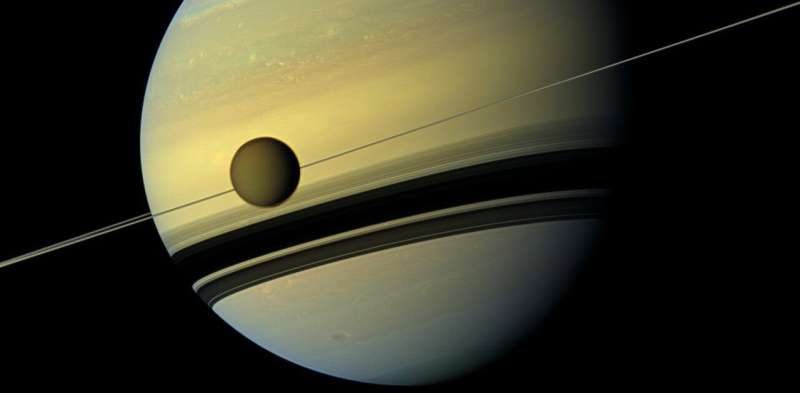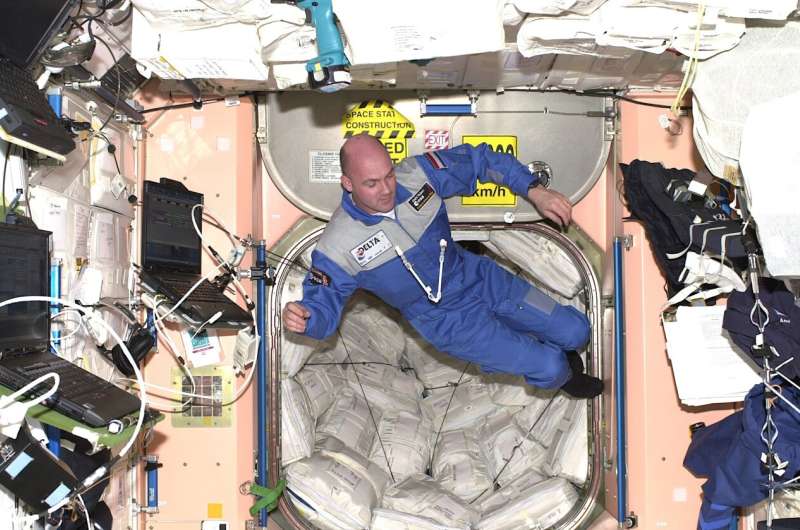
Copernical Team
Stringent training will help fulfill spacewalk mission
 Astronauts on the Shenzhou XII mission have undergone intensive training and exercises for their planned extravehicular activities, commonly known as spacewalks, according to Liu Boming, a member of the crew.
"Compared with the extravehicular operation in the Shenzhou VII mission, extravehicular activities in this coming mission will be much longer and more sophisticated, and I believe tha
Astronauts on the Shenzhou XII mission have undergone intensive training and exercises for their planned extravehicular activities, commonly known as spacewalks, according to Liu Boming, a member of the crew.
"Compared with the extravehicular operation in the Shenzhou VII mission, extravehicular activities in this coming mission will be much longer and more sophisticated, and I believe tha Commander takes place in China's space history
 Major General Nie Haisheng will become the second Chinese astronaut involved in three spaceflights, after his peer Jing Haipeng, as the country is set to launch its seventh manned space mission on Thursday morning.
Nie is commander of the three-member crew of the Shenzhou XII mission, which will be lifted into orbit by a Long March 2F carrier rocket at the Jiuquan Satellite Launch Center i
Major General Nie Haisheng will become the second Chinese astronaut involved in three spaceflights, after his peer Jing Haipeng, as the country is set to launch its seventh manned space mission on Thursday morning.
Nie is commander of the three-member crew of the Shenzhou XII mission, which will be lifted into orbit by a Long March 2F carrier rocket at the Jiuquan Satellite Launch Center i China in space for cooperation, not zero-sum race
 China's Shenzhou-12 manned spacecraft with three taikonauts aboard blasted off from northwest China's Jiuquan Satellite Launch Center Thursday morning, marking another major milestone in the country's space exploration endeavor.
It has been almost five years since China sent its taikonauts into space last time. During the current mission, the Chinese astronauts, the first visitors to the s
China's Shenzhou-12 manned spacecraft with three taikonauts aboard blasted off from northwest China's Jiuquan Satellite Launch Center Thursday morning, marking another major milestone in the country's space exploration endeavor.
It has been almost five years since China sent its taikonauts into space last time. During the current mission, the Chinese astronauts, the first visitors to the s Boeing plans second Starliner capsule test flight in July
 Boeing will attempt a second uncrewed test flight of the company's Starliner space capsule on July 30 after a disappointing first test flight in December 2019, the company and NASA said Wednesday.
United Launch Alliance plans to send the capsule into space aboard an Atlas V rocket at 2:53 p.m. EDT from Complex 41 at Cape Canaveral Space Force Station.
The mission, known as Orbita
Boeing will attempt a second uncrewed test flight of the company's Starliner space capsule on July 30 after a disappointing first test flight in December 2019, the company and NASA said Wednesday.
United Launch Alliance plans to send the capsule into space aboard an Atlas V rocket at 2:53 p.m. EDT from Complex 41 at Cape Canaveral Space Force Station.
The mission, known as Orbita Rocket blasts off carrying first Chinese crew to new space station
 The first astronauts for China's new space station blasted off Thursday for the country's longest crewed mission to date, a landmark step in establishing Beijing as a major space power.
The trio launched on a Long March-2F rocket for the Tiangong station, where they will spend three months, in a much-anticipated blast-off broadcast live on state TV.
Lift-off happened at 9:22 am (0122 GMT
The first astronauts for China's new space station blasted off Thursday for the country's longest crewed mission to date, a landmark step in establishing Beijing as a major space power.
The trio launched on a Long March-2F rocket for the Tiangong station, where they will spend three months, in a much-anticipated blast-off broadcast live on state TV.
Lift-off happened at 9:22 am (0122 GMT Spacesuit problems prevent astronauts from completing job (Update)

Astronauts ventured out on a spacewalk Wednesday to outfit the International Space Station with powerful, new solar panels to handle the growing electrical demands from upcoming visitors.
It's the first of a series of spacewalks to equip the aging orbital outpost with smaller but stronger solar wings.
Computer trouble hits Hubble Space Telescope, science halted

Why is everyone so obsessed with going to Mars? Here are some other worlds ripe for exploration

Last month, China successfully landed and deployed the Zhurong rover on Mars, becoming the second country ever to set wheels on the surface of the red planet.
Last year the United States, the United Arab Emirates and China all launched missions to Mars, taking advantage of the relatively short journey time offered by the two planets' unusually close proximity.
Why are planetary scientists so obsessed with Mars? Why spend so much time and money on this one planet when there are at least seven others in our solar system, more than 200 moons, countless asteroids, and much more besides?
Fortunately, we are going to other worlds, and there are lots of missions to very exciting places in our solar system—worlds bursting with exotic features such as ice volcanoes, rings of icy debris, and huge magnetic fields.
There are currently 26 active spacecraft dotted around our solar system. Some are orbiting other planets and moons, some have landed on the surfaces of other worlds, and some have performed fly-bys to beam back images.
Spacewalking astronauts boosting station's solar power

Astronauts ventured out on a spacewalk Wednesday to outfit the International Space Station with powerful, new solar panels to handle the growing electrical demands from upcoming visitors.
It's the first of a series of spacewalks to equip the aging orbital outpost with smaller but stronger solar wings.
Space embrace: Astronauts and robots work together to service the ISS

A robot must obey the orders given it by human beings, according to one of the three laws of robotics imagined by science fiction writer Isaac Asimov. On board humanity's only outpost in space, this obedience has turned into cooperation. Astronauts and robots are working together.
The latest robot to service the International Space Station is the European Robotic Arm (ERA). This android automaton is much like a human arm. It has an elbow, shoulders and even wrists, and it the first robot able to 'walk' around the Russian part of the Space Station.
The arm will be launched into space together with the Multipurpose Laboratory Module, called "Nauka," from the Baikonur Cosmodrome, in Kazakhstan, on 15 July 2021.
ESA astronaut André Kuipers is seen in this picture during his first space mission in 2004, with a scale model of the European Robotic Arm. The real thing has a length of over 11 m, and has the ability to anchor itself to the Station in multiple locations, moving backwards and forwards with a large range of motion.
"I am happy to see the European Robotic Arm fly next month.
